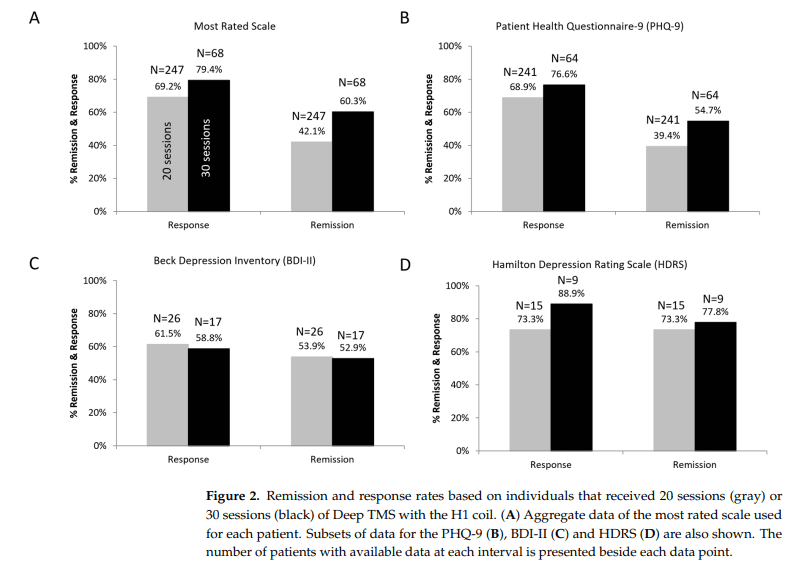Journal: Journal of Clinical Medicine 2024, 13, 816
Authors: Yiftach Roth, Faisal Munasifi, Steven A. Harvey, Geoffrey Grammer, Colleen A. Hanlon and Aron Tendler
Background:
Repetitive transcranial magnetic stimulation (rTMS) is an effective and well-established treatment for major depressive disorder (MDD). Deep TMS utilizes specially designed H-Coils to stimulate the deep and broad cerebral regions associated with the reward system. The improved depth penetration of Deep TMS may be particularly important in late-life patients who often experience brain atrophy.
Objective:
The aim of this phase IV open-label study was to evaluate the safety and efficacy of Deep TMS in patients with late-life MDD.
Methods:
Data were collected from 247 patients with MDD aged 60–91 at 16 sites who had received at least 20 Deep TMS sessions for MDD. The outcome measures included self-assessment questionnaires (Patient Health Questionnaire-9 (PHQ-9), Beck Depression Inventory-II (BDI-II)) and clinician-based scales (21-item Hamilton Depression Rating Scale (HDRS21)).
Results:
Following 30 sessions of Deep TMS, there was a 79.4% response and 60.3% remission rate on the most rated scale. The outcomes on the PHQ-9 were similar (76.6% response and 54.7% remission rate). The highest remission and response rates were observed with the HDRS physician-rated scale after 30 sessions (89% response and a 78% remission rate). After 20 sessions, there was a 73% response and 73% remission rate on the HDRS. Consistent with prior studies, the median onset of response was 14 sessions (20 days). The median onset of remission was 15 sessions (23 days).
Conclusions:
The treatment was well tolerated, with no reported serious adverse events. These high response and remission rates in patients with treatment-resistant late-life depression suggest that Deep TMS is a safe, well-tolerated and effective treatment for this expanded age range of older adults.
